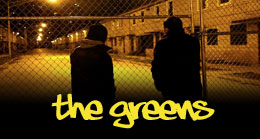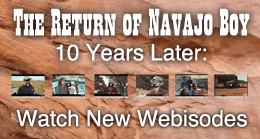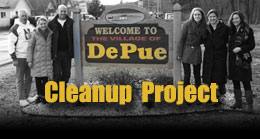We work across cultures with people in disadvantaged communities whose lived experiences could inspire a Groundswell for social change if only there was a way to get the story out.
If a tree falls in the forest and nobody is there to hear it, does it make a sound?
We work from the inside out, collaborating with the participants and with emerging filmmakers from inside the indigenous culture. During our projects we transfer our media skills and share resources with the participants. We not only make a film together, we collaborate in the development of a multifaceted public education campaign which then carries the story and the participants into the mainstream of society. Our mission to collaborate extends across the spectrum of production and continues into exhibition and educational programming. Our participants remain involved, receive benefits and make a difference.
Food Patriots
Food Patriots begins with a wake up call: our son got sick eating chicken contaminated with a superbug, and antibiotics failed. Our personal story of changing the way our family thinks about food, starting a garden, and getting backyard chickens leads to a discovery of a social movement all around us that is changing the way America eats.
When it comes to healthcare, the environment, jobs and national security; changing the way America eats is the most patriotic thing we can do. So we call people who are doing this Food Patriots.
Food Patriots film and public events offer inspiring stories and a practical approach: change what you buy and what you eat by 10%. Think: local, fresh, organic, sustainable. We vote with our food dollars. Together Food Patriots send a powerful signal to the marketplace, and we demand change.
The Greens
The Greens is a personal story about what happens when a place that defines you disappears.
The story starts with a chance encounter, when a white college kid sits in black barber’s chair. Weary of being pitched a story, Sam rolls his eyes when Teddy asks him to “make a film about me.” But as the two Chicagoans talk they realize they have something in common: Sam and Teddy grew up four blocks apart on Division Street – Sam at a private school in Pulaski Park, and Teddy on the other side of the Chicago River, in the white high rises of Cabrini Green.
Teddy offers to take Sam for a walk down his side of Division, and so begins a journey through time, back into the contentious memory of one of Chicago’s “most notorious” housing projects. As Sam and Teddy walk they exchange memories: insider vs. outsider, news vs. reality. At first their memories seem contradictory, but when the two wander into an old row house their stories start to blend. In the end this documentary about Cabrini Green forces viewers to confront their deepest assumptions about the neighborhood, its residents, violence, and the possibility of finding common ground.
The Return of Navajo Boy
The Return of Navajo Boy chronicles an extraordinary chain of events, beginning with the appearance of a 1950s film reel, which lead to the return of a long lost brother to his Navajo family.
Living for more than six decades in Monument Valley, Utah the Cly family has an extraordinary history in pictures. Since the1930’s, family members have appeared as unidentified subjects in countless photographs and films shot in Monument Valley including various postcards, Hollywood Westerns and a rare home-movie by legendary director John Ford. But it is the sudden appearance of a rarely seen vintage film that affects their lives the most.
In 1997 a white man identifying himself as Bill Kennedy from Chicago showed up in Monument Valley with a silent film called “Navajo Boy” which he says his late father produced in the 1950s. Seeking to understand his father’s work on the Navajo Reservation, Kennedy returns the film to the people in it. When Cly family matriarch, Elsie Mae Cly Begay, watches the film she is amused to see herself as a young girl and delights in identifying other members of her family. Elsie recognizes her late mother in the old film as well as her infant brother, John Wayne Cly, who was adopted by white missionaries in the 1950s and never heard from again.
With the return of “Navajo Boy,” Elsie seizes the opportunity to tell her family’s story for the first time, offering a unique perspective to the history of the American west. Using a variety of still photos and moving images from the 40s and 50s and telling their family story in their own voices, the Clys shed light on the Native side of picture making and uranium mining in Monument Valley.
When the long lost brother, John Wayne Cly, learns about the return of “Navajo Boy” in a New Mexico newspaper, he contacts the Clys in hopes that they are his family. As he tells his side of the story The Return of Navajo Boy takes on a literal tone, setting in motion John Wayne’s unforgettable return to his blood brothers and sisters in an emotional reunion in Monument Valley. Visit the official Return of Navajo Boy website for more.
The Robben Island Singers
The Robben Island Singers is an upcoming feature-length documentary film which presents the journeys of three former political prisoners whose singing leads them from a prison island with Nelson Mandela to an unexpected triumph in America and a new stage of struggle in their beloved country.
When Grant Shezi (45), Muntu Nxumalo (44) and Thembinkosi Sithole (45) march out onto a stage for the first time in their lives, our camera is marching behind them. Over their shoulders we see a jam-packed Chicago auditorium and a standing ovation. Off screen their voices reveal their thoughts. Grant says, “My hands were shaking. I never thought I could stand on a stage in front of more than 1000 people.” Muntu says, “This audience cannot be compared to a prison audience.” “We were quite nervous,” admits Thembinkosi. How these three friends arrive at this moment is the story of our film.
The Robben Island Singers follows three ordinary men on their separate paths, showing how they retrace their individual steps and come together to sing the songs that mark their extraordinary journeys. From boyhood days in black townships on the outskirts of Durban, South Africa’s luxurious beachfront city, to guerrilla training camps in Angola and from their arrests, torture and incarceration to their remarkable triumph on stage in America, this film unfolds in the first-person voices of Grant, Muntu and Thembinkosi.
The audience are inside the story all the way. Viewers will root for three regular guys. Their lives reveal the true stories of Mandela’s unknown soldiers, their beautiful singing, their sense of humor, their quiet suffering and their uncanny ability to succeed against all odds on the world stage. Visit the official Robben Island Singers website for more.














